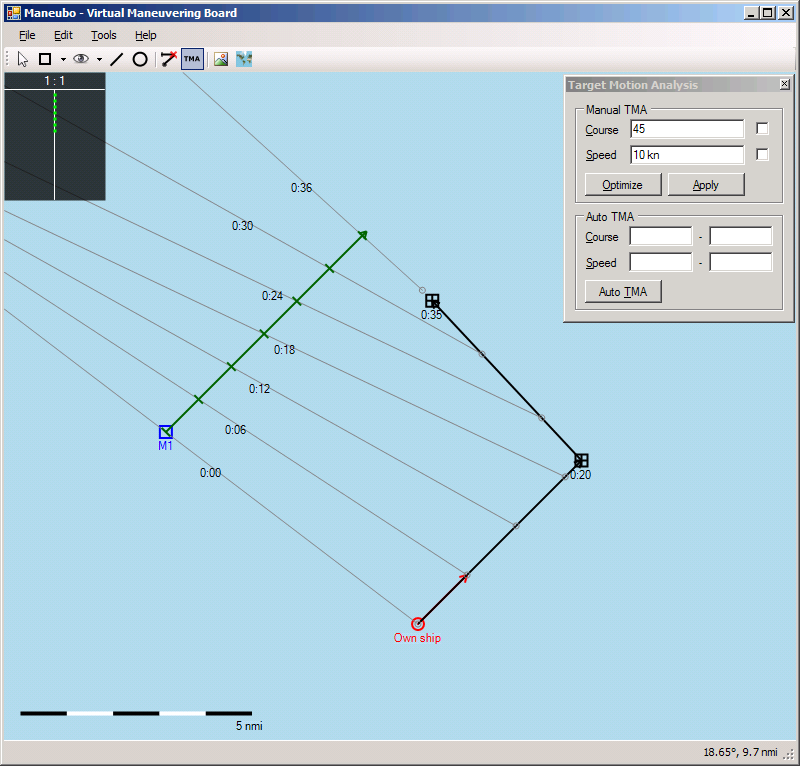
|
|
SUBSIM: The Web's #1 resource for all submarine & naval simulations since 1997
 |
SUBSIM: The Web's #1 resource for all submarine & naval simulations since 1997 |
 02-06-09, 04:03 AM
02-06-09, 04:03 AM
|
#46 |
|
Sea Lord
 Join Date: Feb 2005
Location: Shreveport, Louisiana
Posts: 1,956
Downloads: 13
Uploads: 0
|
Well 2nd month of 2009.. Any progress on this aspect?
|

|
 02-07-09, 10:48 AM
02-07-09, 10:48 AM
|
#47 |
|
Ace of the Deep
 Join Date: Jun 2005
Location: Palm Beach, Florida
Posts: 1,243
Downloads: 53
Uploads: 8
|
 Other features/fixes have taken precedence... Other features/fixes have taken precedence...No, can't say much progress has been made. I have the logic, I haven't spent too much time trying to figure out how to incorporate it yet. In a perfect world, I'd have it designed so people could add on their own tool modules and not wait for me. I haven't quite figured out how to make that work yet. |

|
 02-07-09, 07:44 PM
02-07-09, 07:44 PM
|
#48 |
|
Sea Lord
 Join Date: Feb 2005
Location: Shreveport, Louisiana
Posts: 1,956
Downloads: 13
Uploads: 0
|
XML? Lua?
|

|
 02-07-09, 09:53 PM
02-07-09, 09:53 PM
|
#49 |
|
Ace of the Deep
 Join Date: Jun 2005
Location: Palm Beach, Florida
Posts: 1,243
Downloads: 53
Uploads: 8
|
I don't have any experience interfacing those with vb.net
I was thinking more along the lines of creating a tool-editor app that I could use to create all the tools in MoBo. The app would save the tool objects to bin files and then MoBo would just read all the bin files that were put in the toolbox directory. ...but that's a little easier said than done. |

|
 09-20-11, 06:51 AM
09-20-11, 06:51 AM
|
#50 | |
|
Mate
 Join Date: Aug 2007
Location: Seattle
Posts: 51
Downloads: 27
Uploads: 0
|
Quote:
I discovered a small problem with the least squares method as described, which is that it can sometimes produce solutions on the reciprocal bearing line (e.g. on a bearing 270 instead of 90, for instance). As an example, see the solution below:  when the expected solution is something like this:  (from an early test version of my software using Dr. Sid's least squares approach) One solution to the problem is to use quadratic programming instead of linear least squares. Quadratic programming can solve a linear least squares problem with additional linear constraints on the solution. All you need are constraints of the form (using Dr. Sid's variables) sx*(ax+vx*t-px) + sy*(ay+vy*t-py) >= 0. However, the math involved in writing a QP solver is quite hard (too hard for me, anyway). There are third-party frameworks that can handle it, like the Microsoft Solver Foundation (for .NET). I used one, and tested the idea. It works, but I don't like relying on third-party software. So instead I came up with a solution that involves numerically minimizing a five-dimensional function. It works pretty well, and can accept flexible constraints such as "speed between 6-8 knots and course between 30 and 60 degrees". It would be trivial to add other constraints like range. I wrote about some of the technical details here (http://www.adammil.net/blog/v103_Per..._Analysis.html). I implemented it in software, which is available there too. It supports both bearing and point observations (e.g. from passive and active sonar, respectively) from multiple observers, and all observations are taken into account to find the best TMA solution. The software and source code are freely available under the GPL. However, it's at an alpha stage, so some things are missing... like a manual. :-P Nonetheless it's already pretty useful.  (more recent version of auto TMA) Last edited by AdamMil; 09-20-11 at 07:23 AM. |
|

|
|
|
